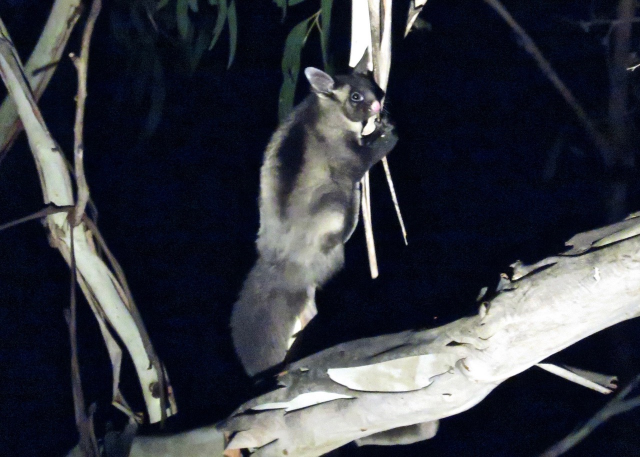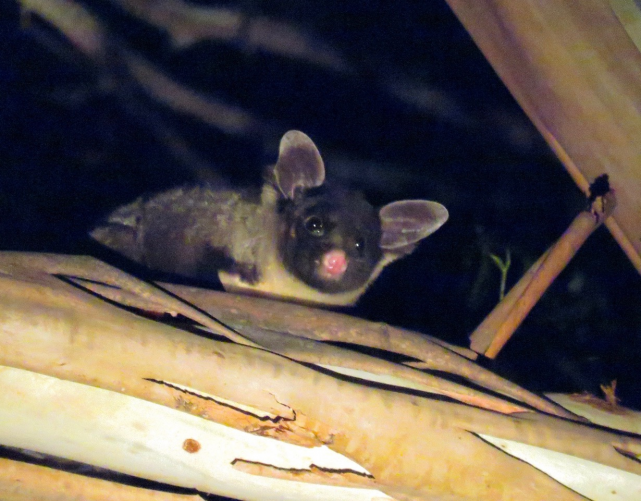Along the course of Olinda Creek you can find many unique species such as the Platypus, Superb Lyrebird and Red-browed Finch however few are as unique and special as the Yellow Bellied Glider.
Recently spotted in Mount Evelyn’s wildlife reserve were two Yellow Bellied Gliders, an exciting discovery after years of attempting to do just that.
Since 2019 these animals have been monitored closely by members of the Mount Evelyn Environment Protection and Progress Association (MEEPPA), a duty absorbed by the citizen science project; Mount Evelyn Wildlife Watch (MEWW) in 2020.
Over the last two years the gliders have been a regular frustration for MEWW members, while their unmistakable calls are heard on nearly every survey (which when possible occur two or three times a fortnight) visual sightings are few and far between.
Footage has recently been recorded by long-time MEEPPA member and founder of MEWW, Thomas Hennessy, of two Yellow Bellied Gliders, believed to be a mated pair, in the Mount Evelyn Recreation Reserve on Tramway Road.
The species is classified as ‘near threatened’ in Victoria but this is a subject of much debate in the scientific community as the species lost a huge proportion of suitable habitat in eastern Victoria in the aftermath of the 2019-2020 ‘Black Summer’ Bushfires.
In Mount Evelyn the Yellow-Bellied Glider is a recent arrival despite historical records the species was confirmed to have returned to the area in 2017 after a 50 year absence.
It is believed this is due to the huge efforts of MEEPPA in conjunction with Melbourne Water and Yarra Ranges Council to rehabilitate and revegetate the area with native vegetation species native to this area.
Named for its striking underside, the Yellow Bellied Glider is a large species of possum about the size of a rabbit and with its specialised membrane stretching from its wrists to its ankles can make long glides over 50m through its forest home.
Yellow Bellied Gliders feed on the nectar and sap of various eucalypt trees. They bite into the trunk of their preferred eucalyptus, wait for the sap to run and then lap it up with their long pink tongues. When feeding they are easy to observe as they are intent on feeding and do not appear to be spooked easily.
Yellow Bellied Gliders require large hollows of old Eucalypts in which they live in communal groups. It is therefore important to protect these old trees for the survival of these amazing and special animals.
The preservation and protection of these amazing creatures is dependent on the ongoing monitoring, and revegetation of their preferred nesting and feed trees for their survival.
If you wish to assist MEWW in their wildlife surveying efforts you can contact the MEEPPA facebook page. https://www.facebook.com/meeppa









